Born To Be Wild
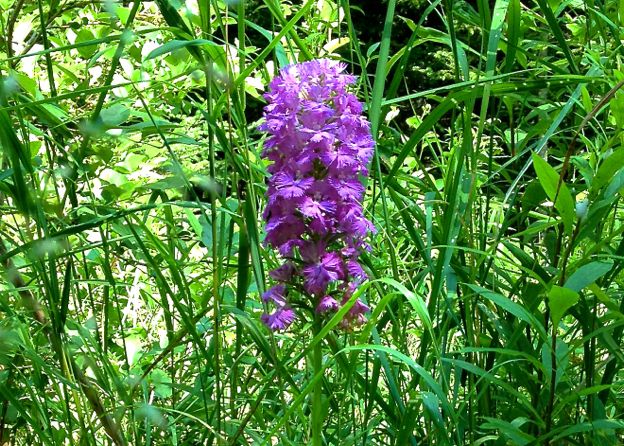
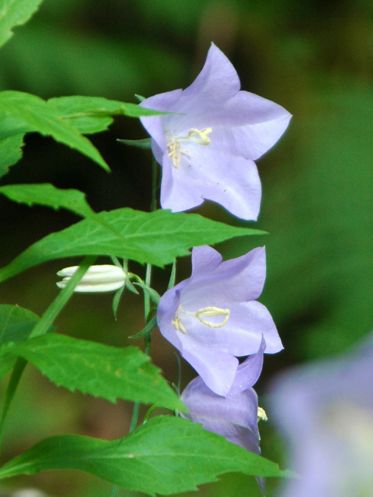
It has been a wild summer. I don’t just mean world news, which I have assiduously avoided because it’s been so grim. I mean that it has been a fantastic summer for wildflowers, starting with iris, lupines, foxgloves, and columbine and now peaking with golden rod, black-eyed Susans, and tall grasses gone to seed. It seems that abundant rain and not-so-hot temperatures have been ideal for run-of-the-mill wildflowers as well as some unusual ones.
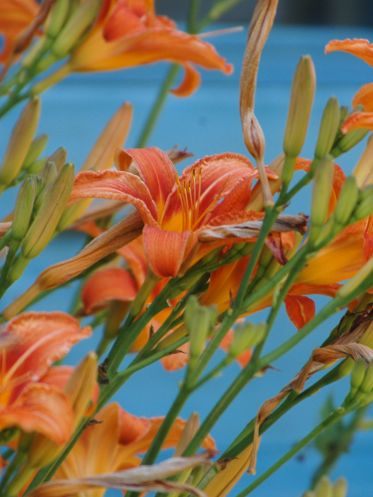
In July, my Maine neighbor showed me a flower along our dirt road that she did not recognize. It had a spectacular spike of candy-pink ruffled orchid-shaped flowers arrayed in orderly profusion along a tall stem, and was growing in a delightful tangle of ferns and sedges. I had no idea what it was, so I sent a photo to my friend, Stephanie Oberle, Director at Brookside Gardens and plant expert extraordinaire. She instantly recognized it as a "Lesser Purple Fringed Orchid" (Platanthera psycodes) -- a wild orchid.
While most orchids with which we are familiar are epiphytes, plants that absorb oxygen, nutrients, and moisture through exposed roots, the fringed orchid is terrestrial, meaning its roots must be in soil. There are about 200 species of terrestrial orchids in the US and Canada, including the Lesser Purple Fringed Orchid, which, though uncommon, is found inmoist swamps, marshes, wet meadows, and boggy ditches from the upper Midwest to the East Coast and from Georgia to Hudson Bay. Excited, my immediate reaction was to plant more, but unfortunately, this July-blooming, butterfly-attracting beauty is difficult to propagate and is not commercially available. It grows best uncultivated in the wild.
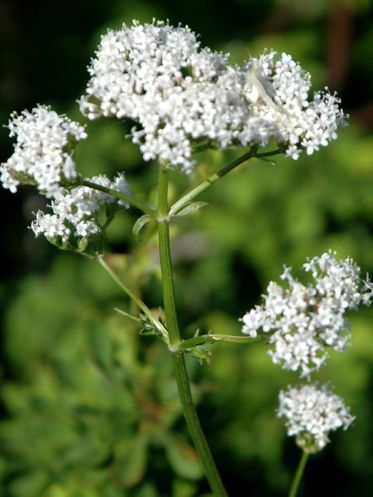
A few days later, I happened upon a treasure trove of light blue flowers growing in the woods. Though I recognized them as campanulas, I'd never seen this color nor had seen them growing wild before. Fresh from the orchid discovery, I was confidant they were another unusual wild flower but when I looked them up I learned that they are probably willow flowers (Campanula persifolia), a native of Europe, North Africa, and parts of Asia. Obviously they had escaped the confines of a gardener's perennial border. Unlike the Lesser Purple Fringed Orchid they aren’t native, though they are obviously “born to be wild”.
Determining that these campanulas are imports had me wondering about other flowers I thought were “wild” by which I mean native flowers that grow uncultivated in natural areas rather than species introduced from other parts of the globe. I looked up orange daylilies (Hemerocallis fulva), sure they fit the bill. After all, they grow in abundance and almost everywhere. I long to stop along a roadside to dig them up and plant them in my garden. I am not too cheap to buy them but these ordinary, long-blooming lilies are not available at local garden centers or in catalogues where you can only find refined cultivars with fancy names like "All Fired Up", "Cosmic Hummingbird", or "Flaming Frolic". A quick peak at the American Hemerocallis Society website revealed that they are actually native to Asia. I confess I was a little disappointed to find that orange daylilies are just another garden-escapee posing as a wild flower.

I looked up another favorite. Tall graceful valerian (Valeriana officianalis) grows wild in meadows and along roads throughout the Eastern US and elsewhere. It blooms in midsummer, producing flat clusters (cymes) of tiny white flowers on slender 2 to 3 foot stems, and is spectacular when it grows in colonies through wild grasses and other meadowy plants. It is so common, it seems like it would have to be native, a but a little delving revealed that valerian was introduced to North America by early colonists who used it as a sedative to treat insomnia and anxiety. (Please don’t try this on your own without consulting a doctor.) Valerian, having broken free of its cultivated confines, has also naturalized, perhaps inspired by its cousin Valeriana sitchensis, a true native indigenous to the western United States.
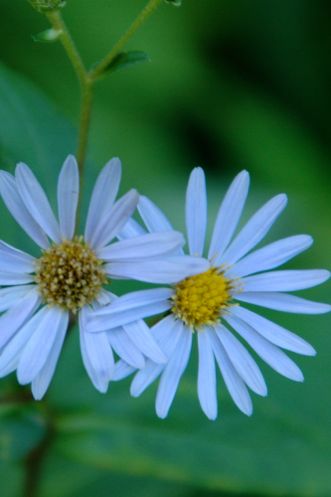
Purple jewelweed, (Impatiens glandulifera), a cousin of the ordinary garden-variety impatiens, was next on my list. It seems to be everywhere this year, growing in moist lightly shaded areas to about 3 feet tall, with long leaves and disproportionately small orchid-like blush-pink flowers. A little research quickly revealed that this is a Himalayan native that made its way with a little human help to North America in the early 1800’s. Purple jewelweed and its relations (orange and yellow) are prolific self-sowers, as each plant produces hundreds of seeds that are explosively released from its pods to ensure they are distributed as far as possible away from the mother plant. Jewelweeds are considered invasive because they spread so quickly, taking over the habitats of native plants.
I was pleased that the next flower I looked up is a native. The Smooth Aster, (Symphyotrichumlaeve), is one of the 180 species of asters that are native to the US and is a sweet periwinkle blue, the perfect accompaniment to perennials and annuals of almost any color. They and other North American asters are commercially available and grow best in full sun. Smooth Asters attract various butterflies and grow 2-3 feet tall, so are good back-of-the-border plants. Pinching them once or twice early in summer will make them lower and bushier so less likely to need staking. Just to confuse everyone, in 1994 experts determined that North American asters differ from asters found elsewhere in the world and so changed their classifications and Latin names.
Just as many plants brought to North America have “gone native”, some so completely as to have become invasive, many North American perennials have done the same in other parts of the world. Once established in far-away gardens, they have naturalized in fields or marshes or woodlands, growing wild where they find conditions conducive to their specific needs. It is the nature of things: “Like a true nature’s child, they are born to be wild”.
